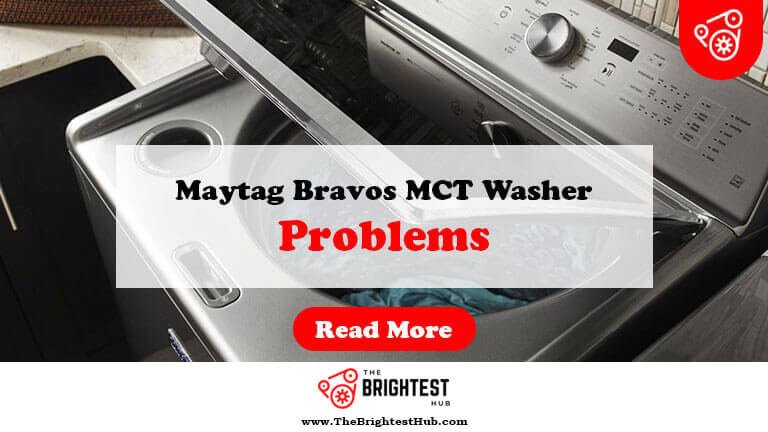Chevy 5.3 Motor Problems: Common Issues & Fixes
Chevy 5.3 motors often face issues like oil consumption, lifter failure, and transmission problems. Regular maintenance helps mitigate these concerns.
The Chevy 5. 3-liter V8 engine is popular for its performance and reliability. Many drivers appreciate its power and efficiency, making it a common choice for trucks and SUVs. However, like any engine, it is not without its problems. Owners frequently report issues that can affect performance and longevity.
Understanding these common problems is essential for anyone considering or currently driving a vehicle with a 5. 3 motor. Regular maintenance and early detection of issues can significantly enhance the engine’s lifespan and reliability. This guide aims to provide insights into the most prevalent Chevy 5. 3 motor problems and how to address them effectively.
Introduction To Chevy 5.3 Motor

The Chevy 5.3 motor is a well-known engine. It combines power and efficiency. Many truck and SUV owners love it. However, this engine has some problems. Understanding these issues helps owners maintain their vehicles.
Popularity And Applications
The Chevy 5.3 engine is very popular. It is used in many vehicles. Here are some common applications:
- Chevrolet Silverado
- GMC Sierra
- Chevrolet Tahoe
- GMC Yukon
- Chevrolet Suburban
This engine offers a great balance of power and fuel economy. It is suitable for both work and leisure activities.
General Characteristics
The Chevy 5.3 motor has several notable features:
| Feature | Description |
|---|---|
| Displacement | 5.3 liters |
| Cylinders | 8 |
| Horsepower | 355-420 HP |
| Torque | 383-460 lb-ft |
| Fuel Type | Gasoline |
This engine is known for its reliability. It offers strong towing capacity and good acceleration. Many appreciate its smooth performance.
Common Problems With Chevy 5.3 Motors
The Chevy 5.3 motor is popular for its performance. However, it has some common issues. Understanding these problems can help you maintain your vehicle better.
Excessive Oil Consumption
Many owners report excessive oil consumption in their Chevy 5.3 motors. This can lead to various problems. Here are some key points:
- Engine may burn oil quickly.
- Check the oil level frequently.
- Low oil can cause engine damage.
Several factors contribute to this issue:
| Factor | Description |
|---|---|
| Piston Ring Wear | Worn piston rings allow oil to enter combustion. |
| Valve Seal Failure | Damaged seals let oil leak into the cylinders. |
| PCV System Issues | Faulty PCV can cause pressure buildup, leading to leaks. |
Regular maintenance can help reduce oil consumption. Always use high-quality oil for your engine.
Faulty Afm (active Fuel Management) System
The Active Fuel Management (AFM) system has its problems. This system helps improve fuel efficiency. Yet, it can malfunction. Here’s what to know:
- AFM can cause rough engine performance.
- Some engines may experience a noticeable loss of power.
- Check engine light may illuminate.
Common symptoms of a faulty AFM include:
- Engine hesitation during acceleration.
- Unusual engine noises.
- Increased fuel consumption.
Disabling the AFM system can improve performance. Consult a mechanic for proper guidance.
Engine Knocking Noise Issue
The Chevy 5.3 Motor is known for its power and reliability. Yet, many owners face an annoying engine knocking noise. This issue can signal serious problems. Understanding its causes and solutions is crucial for every owner.
Causes Of Knocking
- Low Oil Levels: Insufficient oil can cause friction.
- Worn Engine Components: Over time, parts may wear out.
- Fuel Quality: Poor fuel can lead to knocking.
- Ignition Timing: Incorrect timing can cause pre-ignition.
- Detonation: This occurs from excessive pressure in the cylinder.
Solutions And Fixes
Addressing the engine knocking noise can save you from bigger repairs.
- Check Oil Level: Ensure it is at the right level.
- Use Quality Fuel: Opt for high-octane gasoline.
- Inspect Spark Plugs: Replace worn-out plugs.
- Adjust Ignition Timing: Set the timing according to specifications.
- Seek Professional Help: Consult a mechanic for detailed inspection.
| Issue | Solution |
|---|---|
| Low Oil Levels | Check and refill oil |
| Worn Engine Components | Replace worn parts |
| Poor Fuel Quality | Switch to high-octane fuel |
| Incorrect Ignition Timing | Adjust to correct timing |
| Detonation | Check engine for pressure issues |
Faulty Throttle Position Sensors
The Chevy 5.3 motor may experience issues with its Throttle Position Sensor (TPS). This component plays a key role in controlling the air-fuel mixture. A faulty TPS can lead to various performance problems. Understanding symptoms and solutions is crucial for maintaining your vehicle.
Symptoms Of Failure
Recognizing the signs of a faulty TPS can save time and money. Here are some common symptoms:
- Unresponsive Acceleration: Delayed response when pressing the gas pedal.
- Engine Stalling: The engine may unexpectedly shut off.
- Check Engine Light: A warning light may illuminate on the dashboard.
- Rough Idle: The engine may shake or vibrate while idling.
- Poor Fuel Economy: Increased fuel consumption may occur.
Replacement And Maintenance
Proper maintenance can extend the life of your TPS. Follow these steps for replacement:
- Diagnose: Use a scan tool to check for error codes.
- Locate: Find the throttle body where the TPS is mounted.
- Remove: Disconnect the battery. Unplug the TPS connector.
- Install: Attach the new TPS. Ensure it aligns properly.
- Test: Reconnect the battery and start the engine.
Regular maintenance can prevent issues:
- Inspect wiring and connectors for damage.
- Keep the throttle body clean.
- Replace the TPS as recommended in the owner’s manual.
Taking these steps ensures your Chevy 5.3 motor runs smoothly.
Coolant Leaks And Overheating
The Chevy 5.3 motor faces issues with coolant leaks and overheating. These problems can lead to severe engine damage. Early detection and proper fixes are crucial. Understanding how to identify leaks helps you maintain your vehicle’s health.
Identifying Coolant Leaks
Coolant leaks can be tricky to spot. Here are some common signs:
- Puddles under the vehicle.
- Low coolant levels in the reservoir.
- Sweet smell inside the cabin.
- Overheating engine warnings on the dashboard.
To locate the leak:
- Check the radiator and hoses for cracks.
- Inspect the water pump for signs of corrosion.
- Look for wet spots around the engine block.
Use a flashlight for better visibility. This helps you find small leaks easily.
Preventive Measures And Fixes
Preventing coolant leaks is essential. Here are some effective measures:
- Regularly check coolant levels.
- Inspect hoses for wear and tear.
- Replace old or damaged gaskets.
For existing leaks, consider these fixes:
| Problem | Solution |
|---|---|
| Leaking hoses | Replace with new hoses. |
| Faulty water pump | Replace the water pump. |
| Damaged radiator | Repair or replace the radiator. |
Regular maintenance prevents overheating. Schedule checks every six months. Keep your Chevy 5.3 running smoothly.
Failed Fuel Injectors
The Chevy 5.3 motor is known for its reliability. However, failed fuel injectors can cause significant issues. Fuel injectors deliver fuel to the engine. A malfunction can lead to poor performance and increased emissions.
Signs Of Failure
Recognizing the signs of failed fuel injectors is crucial. Here are some common indicators:
- Engine Misfires: The engine may shake or hesitate.
- Poor Fuel Economy: A sudden drop in miles per gallon.
- Rough Idle: The engine runs unevenly when stopped.
- Check Engine Light: Dashboard warning can indicate problems.
- Fuel Leaks: Fuel pooling around the injectors is a red flag.
Repair And Replacement Tips
Fixing failed fuel injectors involves careful steps. Here’s a simple guide:
- Diagnose the Issue: Use an OBD-II scanner to check codes.
- Inspect the Injectors: Look for leaks or carbon buildup.
- Clean the Injectors: Use a cleaning solution to restore function.
- Replace if Necessary: Consider replacing faulty injectors.
| Injector Condition | Action Required |
|---|---|
| Leaking | Replace immediately |
| Clogged | Clean or replace |
| Functional | No action needed |
Regular maintenance helps prevent fuel injector issues. Use high-quality fuel and keep your engine clean. Stay aware of warning signs to avoid costly repairs.
Troubleshooting Electrical Problems
Electrical problems in the Chevy 5.3 motor can cause serious issues. Identifying the root cause is essential for effective repairs. A systematic approach can save time and money.
Common Electrical Issues
- Dead Battery – Check for corrosion and loose connections.
- Faulty Alternator – Look for dim lights and warning signals.
- Bad Starter – A clicking sound often indicates a starter issue.
- Wiring Problems – Inspect for frayed or damaged wires.
- Grounding Issues – Ensure all grounds are secure and clean.
Diagnostic And Repair Techniques
Use these techniques to diagnose and repair electrical issues:
- Visual Inspection: Check battery terminals and cables.
- Multimeter Testing: Measure voltage and resistance.
- OBD-II Scanner: Read trouble codes for guidance.
- Battery Load Test: Ensure battery holds charge under load.
Follow these steps to fix common problems:
| Problem | Solution |
|---|---|
| Dead Battery | Charge or replace the battery. |
| Faulty Alternator | Replace the alternator. |
| Bad Starter | Install a new starter motor. |
| Wiring Problems | Repair or replace damaged wires. |
| Grounding Issues | Clean and secure grounding points. |
Regular maintenance can prevent many electrical problems. Stay proactive to keep your Chevy 5.3 running smoothly.
Preventative Maintenance And Care
Preventative maintenance is key for the Chevy 5.3 motor. Regular care helps avoid common issues. This can save you time and money in repairs.
Regular Maintenance Schedule
Following a regular maintenance schedule is crucial. Here are some key tasks to include:
- Oil Changes: Change oil every 5,000 to 7,500 miles.
- Filter Replacements: Replace air and fuel filters regularly.
- Coolant Checks: Inspect and replace coolant every 30,000 miles.
- Spark Plug Maintenance: Replace spark plugs every 100,000 miles.
- Battery Care: Check battery condition every six months.
Setting reminders can help you stick to this schedule. Use a calendar or app for alerts.
Tips For Longevity And Performance
Here are some tips to enhance the life of your Chevy 5.3 motor:
- Use Quality Parts: Always choose OEM or high-quality aftermarket parts.
- Avoid Overloading: Don’t exceed the vehicle’s weight limit.
- Monitor Fluid Levels: Regularly check oil, coolant, and transmission fluid.
- Drive Smoothly: Avoid hard accelerations and sudden stops.
- Regular Inspections: Schedule professional check-ups at least once a year.
These tips can help maintain performance and extend engine life. Stay proactive to enjoy a reliable driving experience.
Professional Assistance Vs. Diy Fixes
Choosing between professional help and DIY fixes for Chevy 5.3 motor problems can be tough. Both options have their benefits and downsides. Understanding when to seek expert help or tackle repairs yourself is crucial.
When To Seek Professional Help
Some situations require a professional mechanic’s expertise. Here are key signs:
- Complex Issues: Problems like engine failure need expert analysis.
- Warranty Concerns: DIY repairs can void warranties.
- Safety Risks: Issues affecting safety should never be ignored.
- Lack of Tools: Specialized tools may be needed for repairs.
Consider the cost of repairs versus potential damage from DIY fixes. Sometimes, professional assistance saves money in the long run.
Diy Repairs: Pros And Cons
Many car owners prefer DIY repairs for their Chevy 5.3 motors. Here are the advantages and disadvantages:
| Pros | Cons |
|---|---|
| Cost Savings: DIY can save money on labor. | Time-Consuming: Repairs may take longer than expected. |
| Learning Experience: Gain knowledge about your vehicle. | Risk of Error: Mistakes can lead to bigger issues. |
| Flexibility: Fix at your own pace. | Tool Limitations: Lack of tools can hinder repairs. |
Evaluate your skills and tools before deciding. DIY repairs can be rewarding but may lead to complications.
Frequently Asked Questions
What Are Common Chevy 5.3 Motor Issues?
Common issues include oil consumption, lifter failure, and coolant leaks.
How To Identify Chevy 5.3 Engine Problems?
Listen for unusual noises, check for warning lights, and monitor oil levels regularly.
What Causes Chevy 5.3 Oil Consumption?
Worn piston rings or valve seals often lead to excessive oil consumption in the Chevy 5. 3.
How To Fix Chevy 5.3 Lifter Noise?
Replacing the lifters or adjusting the oil pressure can resolve lifter noise effectively.
Is The Chevy 5.3 Engine Reliable?
The Chevy 5. 3 is generally reliable but requires regular maintenance to avoid common issues.
Conclusion
Understanding the common issues with the Chevy 5. 3 motor is essential for maintaining its performance. Regular maintenance can prevent many problems. If you experience symptoms, addressing them promptly will save time and money. Stay informed and proactive to keep your vehicle running smoothly for years to come.
Drive safely and enjoy the journey!






